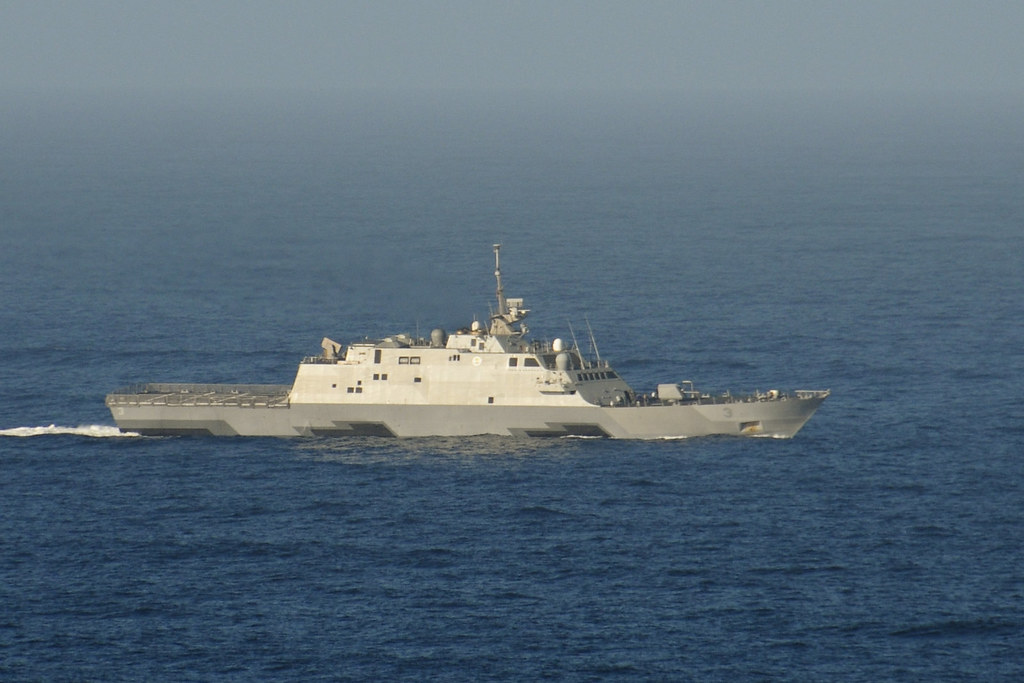EVERETT, Wash. (NNS) -- Sailors and guests bade farewell to Oliver Hazard Perry-class frigate USS Ingraham (FFG 61) as the ship concluded 25 years of naval service during a decommissioning ceremony on Naval Station Everett (NSE), Washington, Nov. 12.
Former Secretary of Defense Robert M. Gates joined the crew in honoring Ingraham and her many years of service by acting as the guest speaker at the ceremony.
Several former crew members, plankowners, friends and family also attended.
Ingraham's last commanding officer, Cmdr. Daniel Straub kicked off the ceremony and put into context the ship's place in the history of the Navy during her time in service.
"During 25 years of service to the nation, Ingraham has answered America's call; Ingraham has always been ready, willing and able to fulfill mission requirements," said Straub.
The decommissioning ceremony, a time-honored naval tradition, retires a ship from service through a variety of ceremonial observances, including the department heads' final reports, lowering of the ship's commissioning pennant and Sailors walking off the ship while a bugler plays "Taps." The ceremony is meant to pay respect to the ship and the Sailors who have served in her over decades of honorable service.
According to Gates, the ship has seen a long and storied career, and deserves to be honored for the part she played in history. However, Ingraham's Sailors, along with all service members, also deserve to be honored for their great courage and sacrifice, he said.
"I think its important that people understand the sacrifices involved, not just by the men and women in uniform, but by their families," said Gates. "We owe a huge debt of gratitude, all of us."
Ingraham was assigned to Destroyer Squadron (DESRON) 9. In October, the ship returned from her last deployment to the 4th Fleet in support of Operation Martillo. During this deployment, Ingraham disrupted or intercepted 11,937 kilograms of cocaine valued at more than $560 million.
"Ingraham, as a crew, has proven time and again that they care about their ship and each other," said Straub. "They are the ones who forged all of Ingraham's successes.
"All the incredible men and women who have served their country on this great warship have earned my deepest gratitude, and the gratitude of this nation," he said.
For Gates, the ceremony was a new experience, as it was the first decommissioning he has ever attended. He said he has seen many commissioning ceremonies in his day, and a decommissioning brings forth a whole different set of emotions.
"It's kind of sad, actually," said Gates. "The last time I was at a commissioning, seeing the the Sailors run on board and man the ship, it's sort of the start of the whole long service for a ship. To see everybody come off is kind of sad."
USS Ingraham was commissioned Aug. 5, 1989, at Naval Station Long Beach, California, as the last Oliver Hazard Perry-class frigate. She was the fourth ship named for Captain Duncan Nathaniel Ingraham.
"[Ingraham] has been in service for so long, and seen so many things; it's got so much history, it's huge," said Information Systems Technician 2nd Class (SW/IDW) Steven Harte, an Ingraham crew member. "It's done a great job, it deserves a retirement."
Ingraham is scheduled to be transferred for dismantlement Jan. 30.
Remain now 9 on 51 Perry : USS Mc Clusky (FFG 41), USS Vandegrift (FFG 48), USS Taylor (FFG 50), USS Gary (FFG 51), USS Elrod (FFG 55), USS Simpson (FFG 56), USS Samuel B. Roberts (FFG 58), USS Kauffman (FFG 59), USS Rodney M. Davis (FFG 60).
With 4 LCS only 13 FFG for USN.
Last edited:


